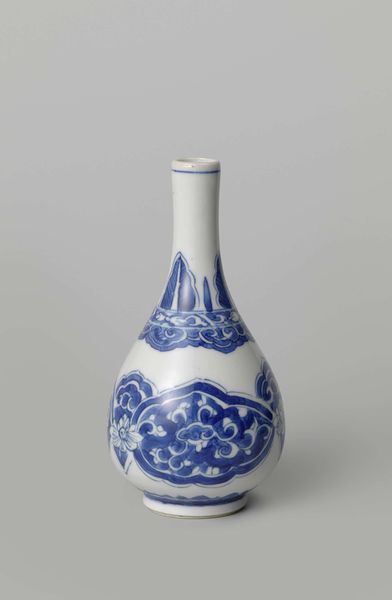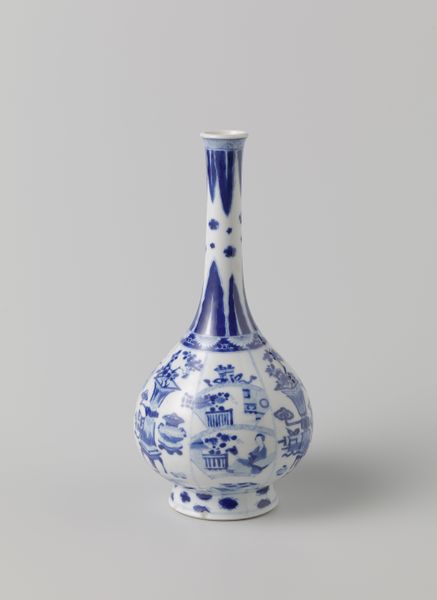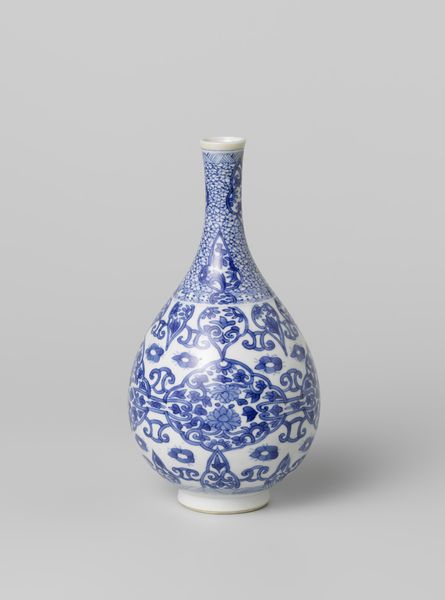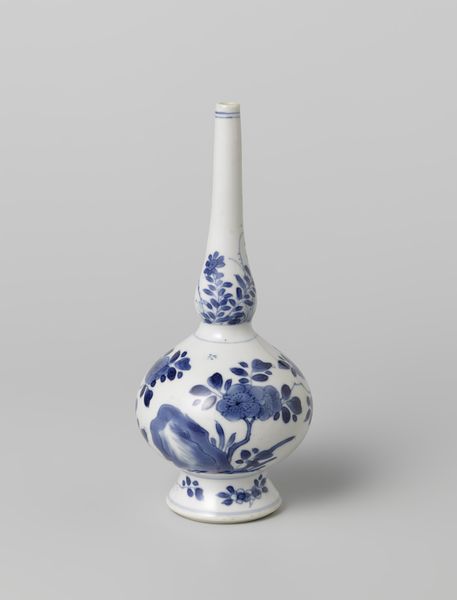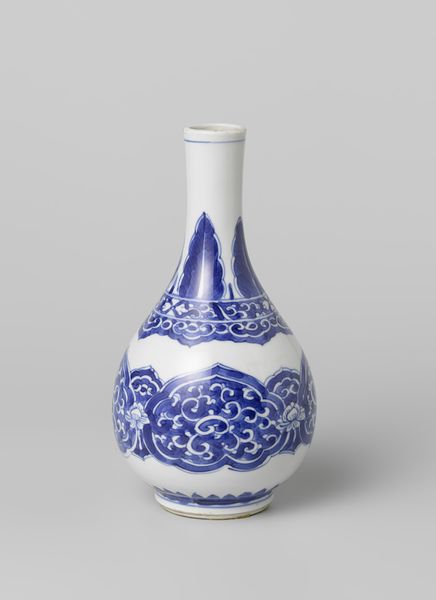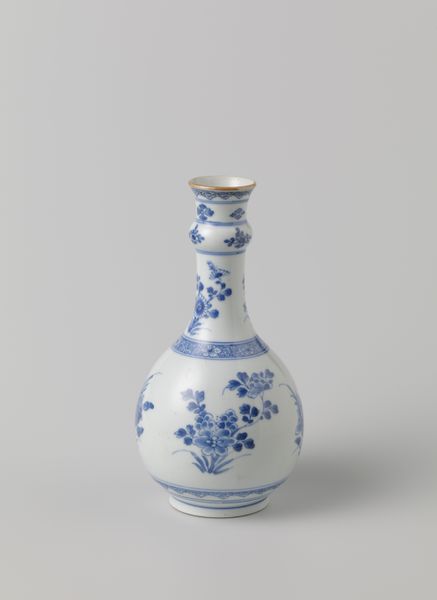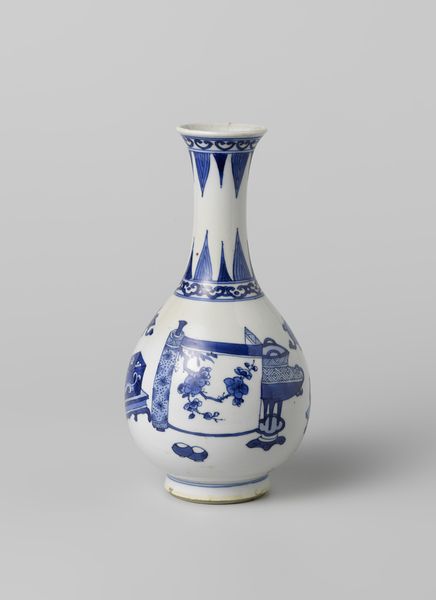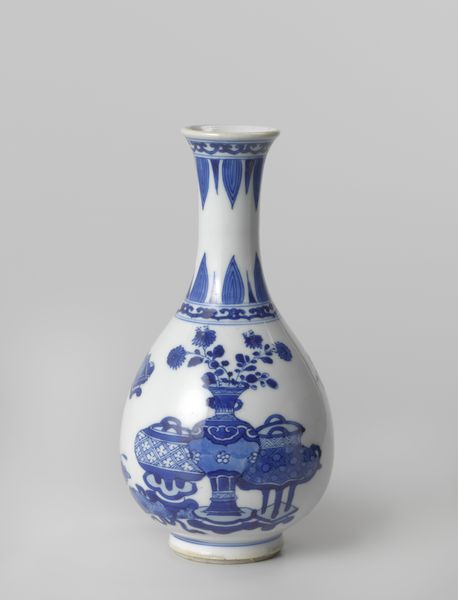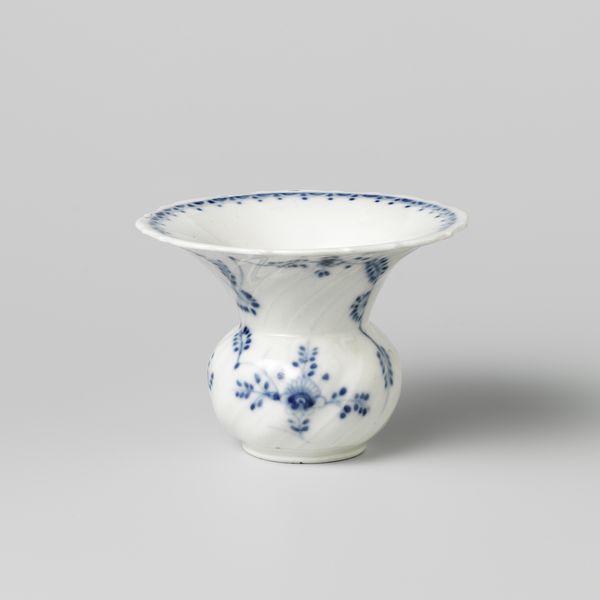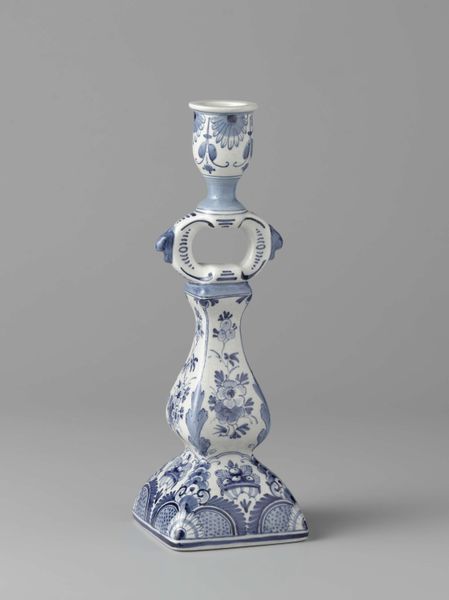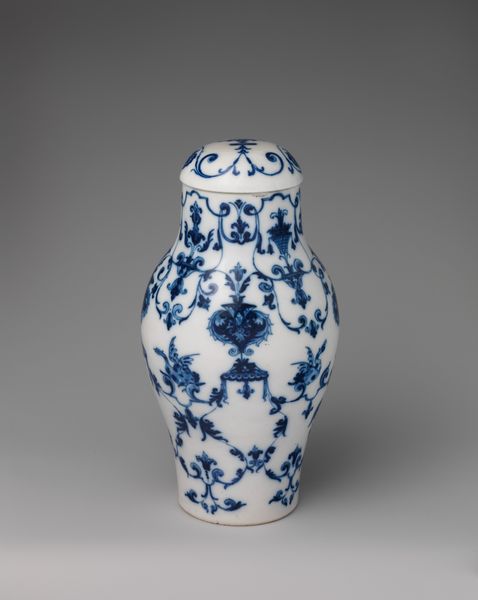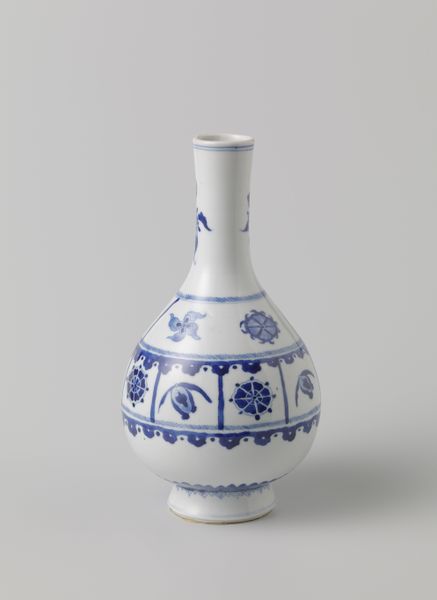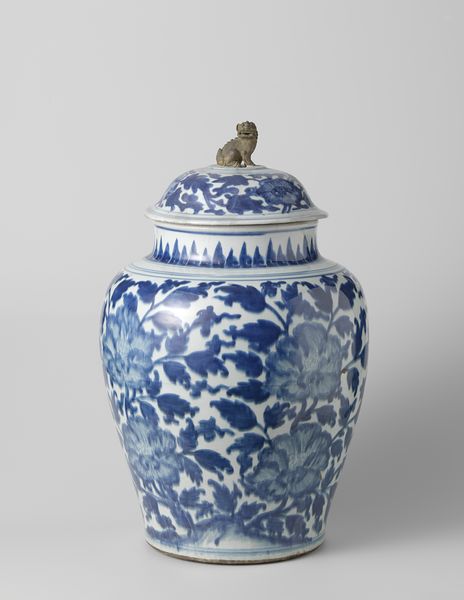
ceramic, earthenware
#
asian-art
#
ceramic
#
earthenware
#
geometric
#
decorative-art
Dimensions: height 15.4 cm, diameter 0.7 cm, diameter 8.2 cm, diameter 3.7 cm
Copyright: Rijks Museum: Open Domain
Curator: Oh, my goodness, that’s such an elegant form! It almost seems to be reaching for something, or about to begin a ritual. There’s a stillness to it that invites meditation, wouldn't you say? Editor: We’re looking at a Rosewater Sprinkler or bottle, dating back to somewhere around 1700-1724, that’s currently residing here at the Rijksmuseum. What strikes me is the blending of cultures, an attempt at political or even market conciliation using cultural items. Curator: Rosewater! Of course. Suddenly I have a scent memory! Now that you mention it, what seems very immediate to me is that fascinating interplay between the round form of the container and the linear designs. Does that tension speak to that negotiation, perhaps? Editor: Certainly, there’s a fascinating interplay here. These earthenware pieces, decorated in underglaze blue, clearly evoke the visual language of Chinese porcelain which were traded through the East India Companies at the time. However, by mimicking that desirable visual language they appealed to specific markets. Curator: Imitation and homage! I am wondering, what effect it might have had, historically, to handle such an object—its weight, the coolness of the ceramic against the skin... and now, observing it. It does seem a beautiful relic, almost frozen in a kind of grace. Editor: Absolutely. We know very little about the people for whom these would have been originally made, and it's important to remember that the experience of appreciating something within the museum is far removed from how it may have operated originally in any of the cultures or markets for whom these bottles were made. Curator: That reminds me of a poem about captured birds always singing in exile. It deepens the mystery, perhaps. Though I cannot touch this one, I imagine someone from that time and world may also not have been allowed to, and that we all gaze on it through layers. Thank you! Editor: A very poetic and interesting take. And it certainly highlights how the layers of history and access add richness to our modern view. Thank you!
Comments
No comments
Be the first to comment and join the conversation on the ultimate creative platform.
